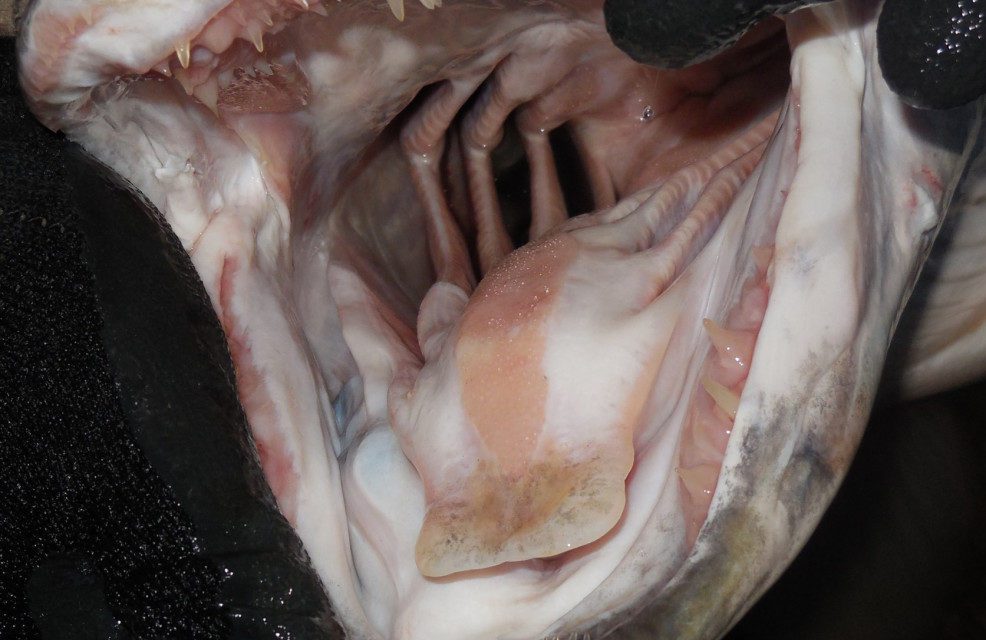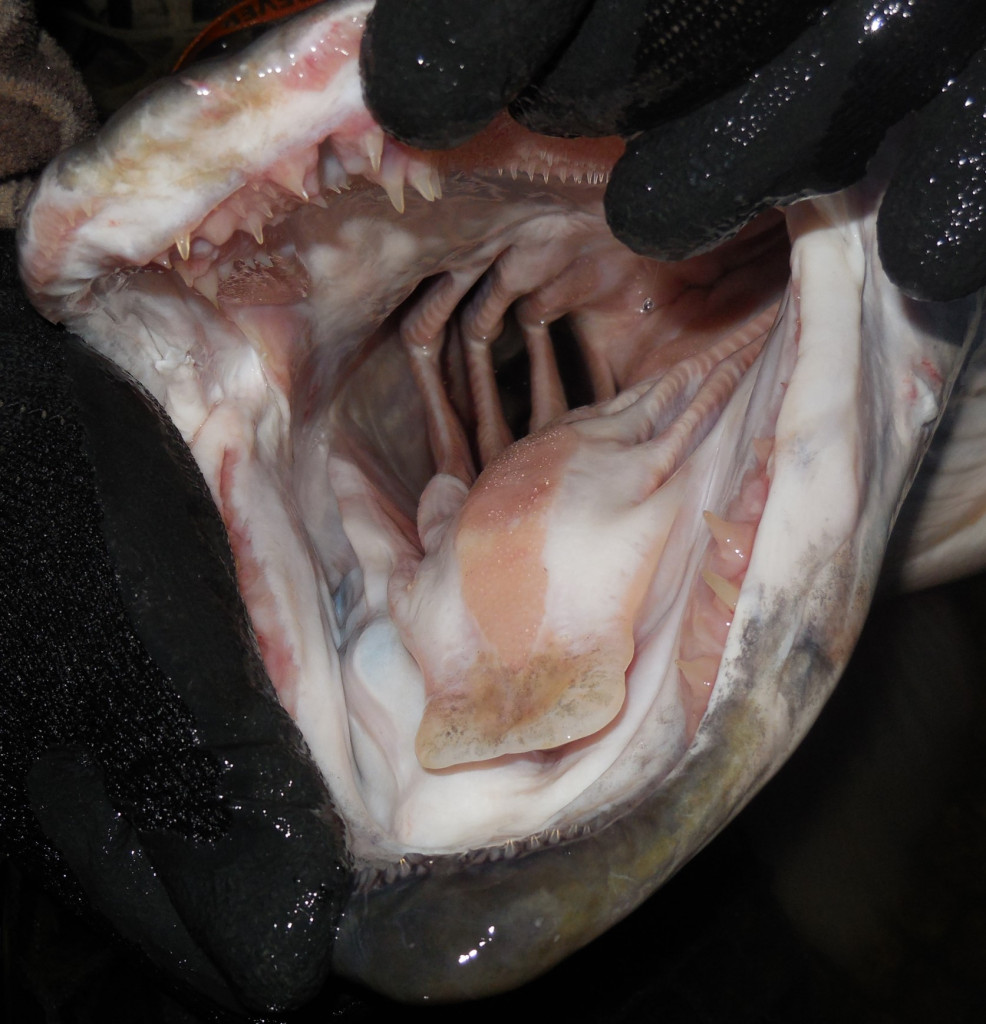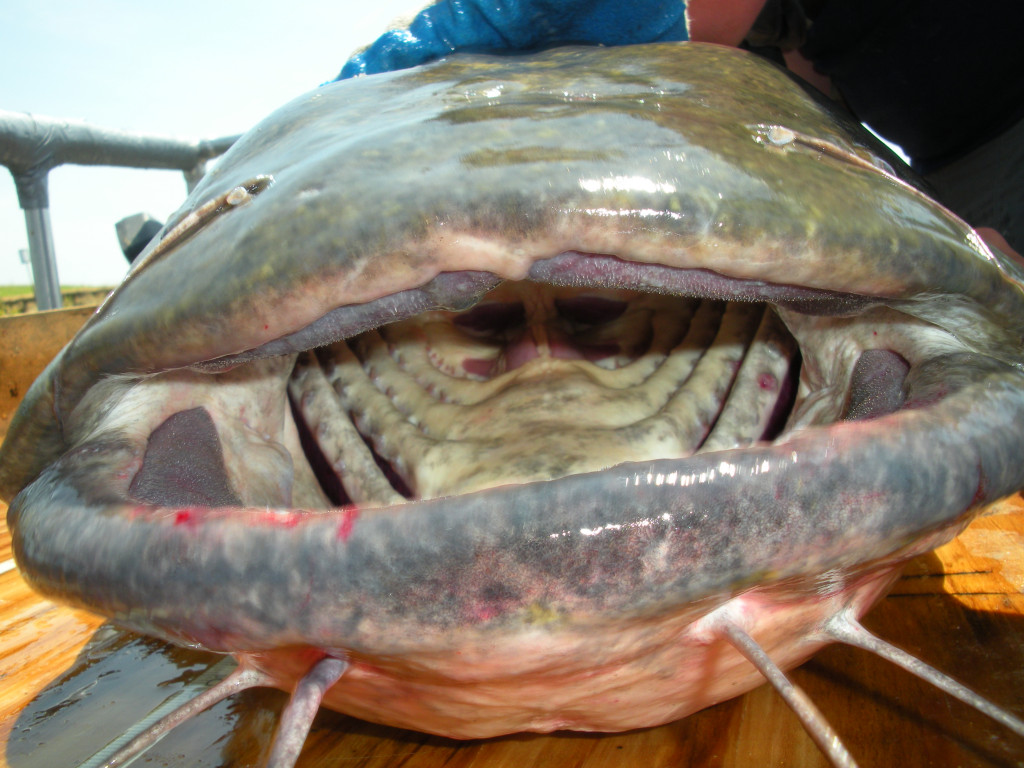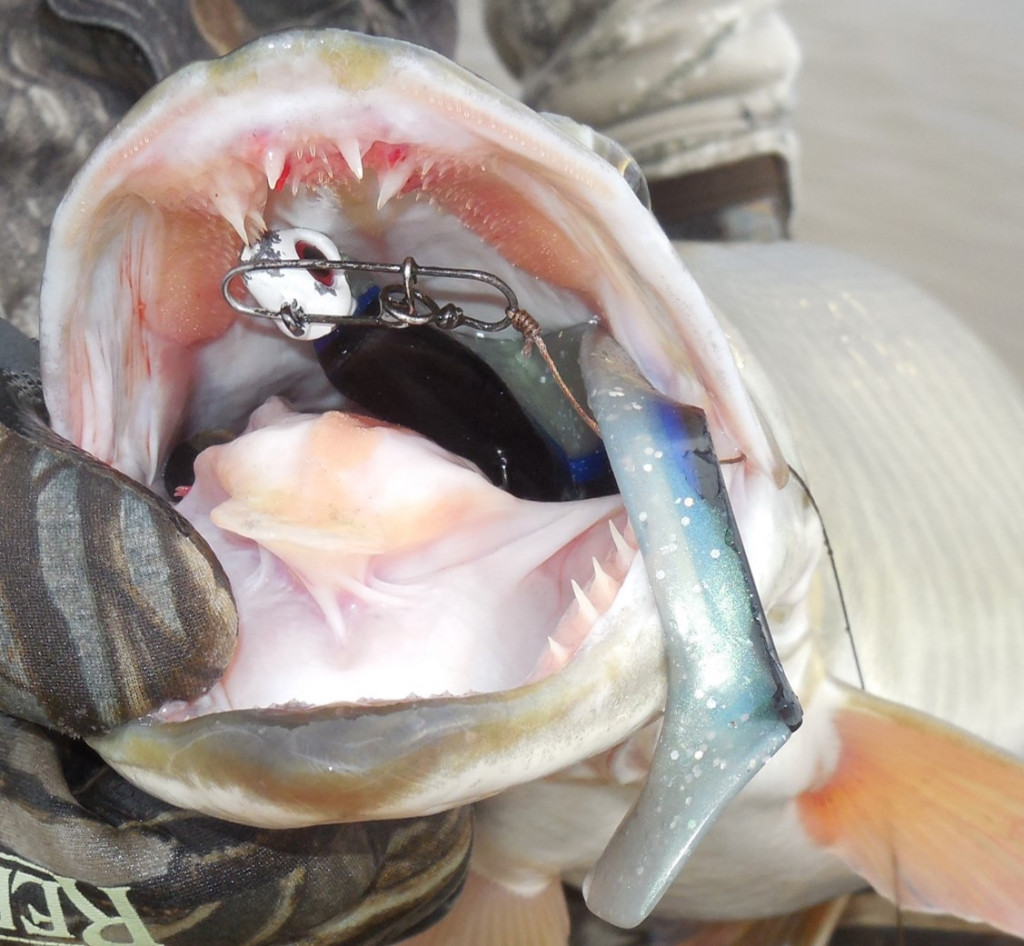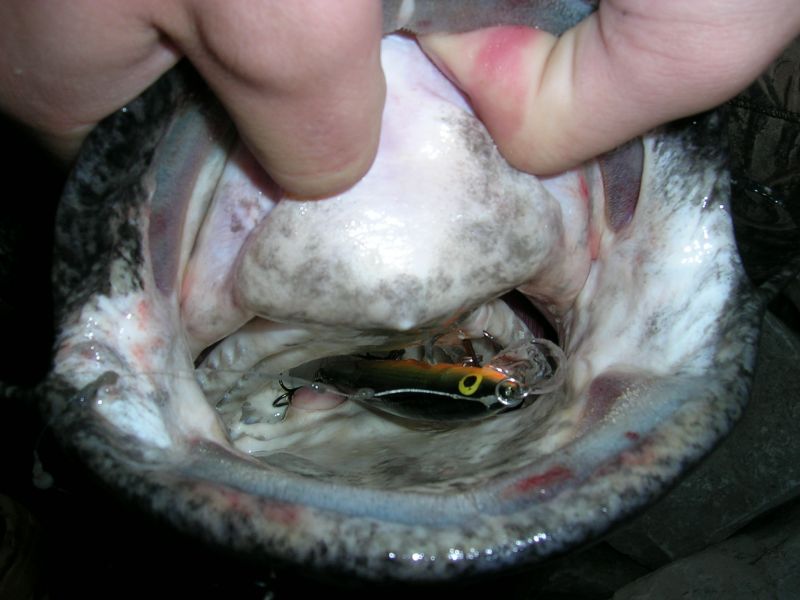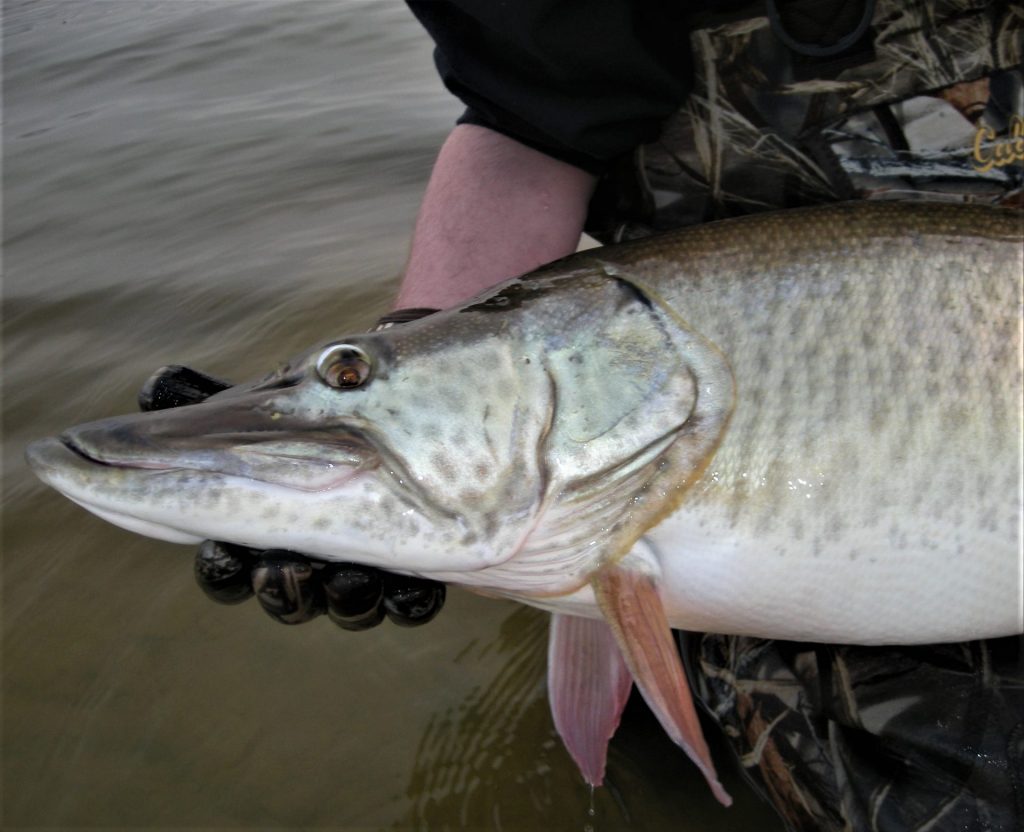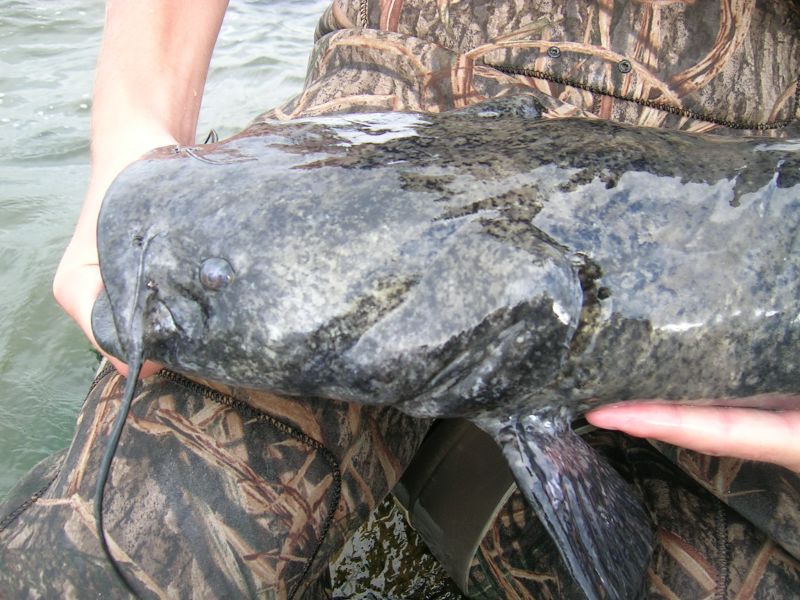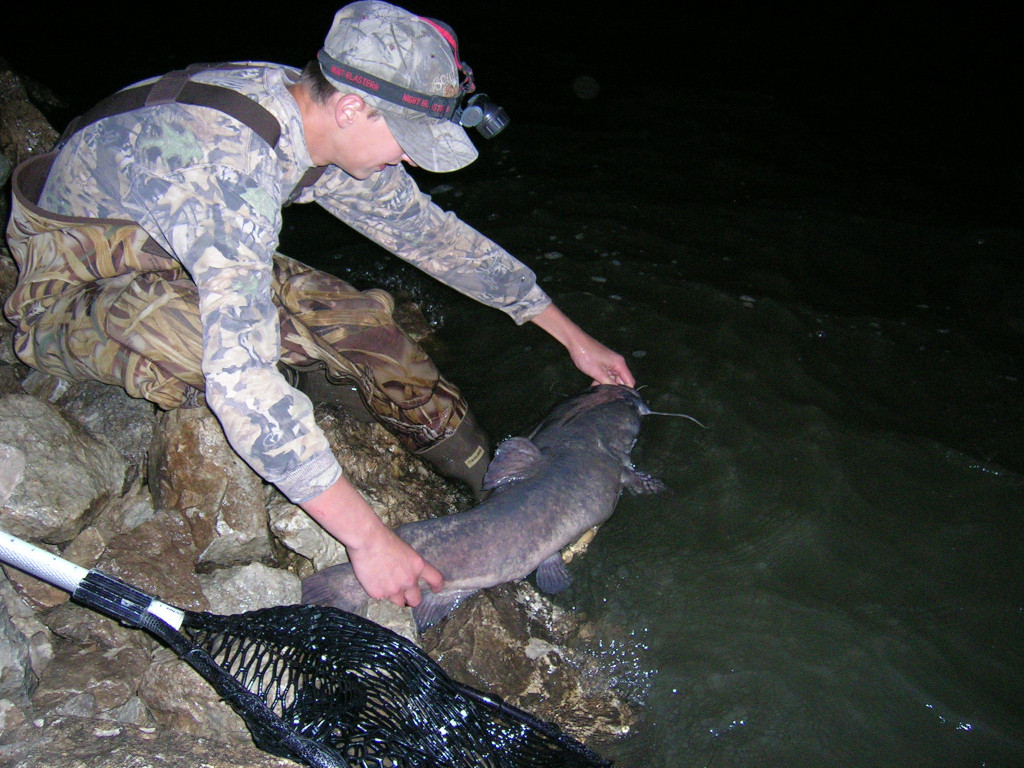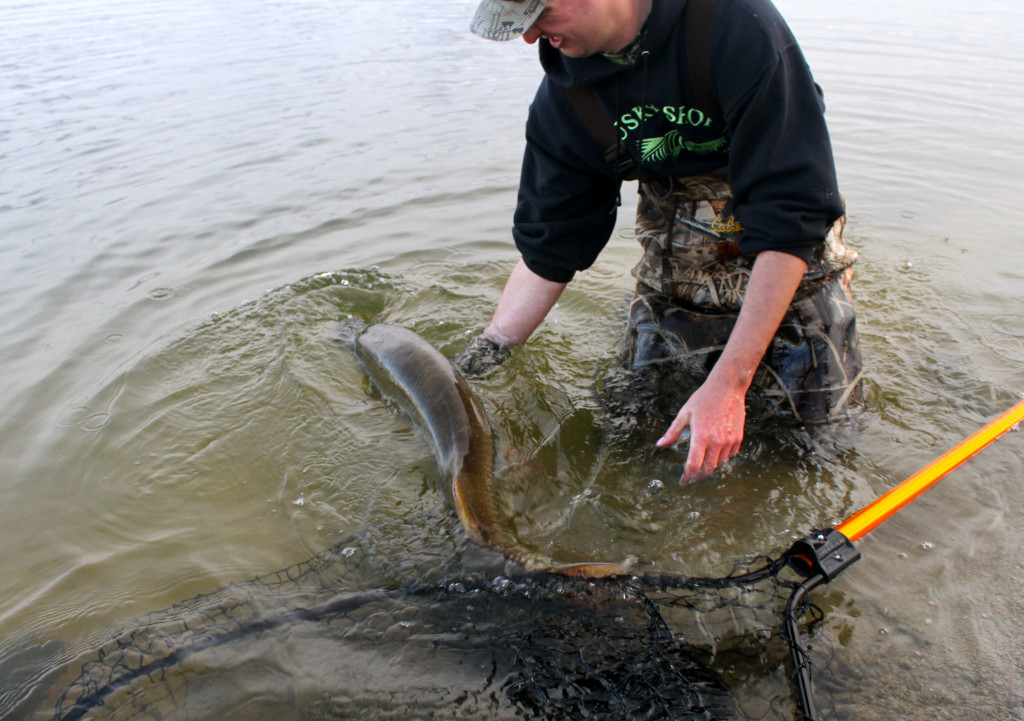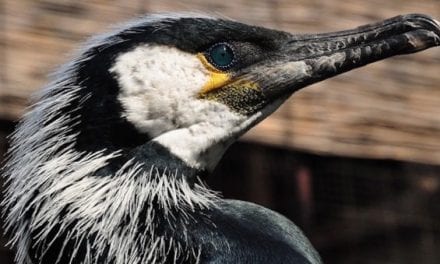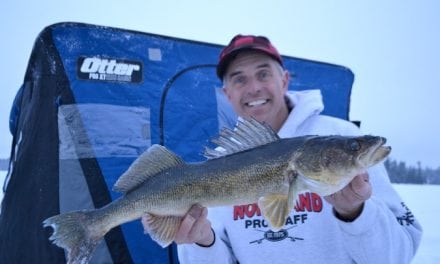You know I love big fish, big fish of any species, but especially big, bad, predator fish. Nebraska is blessed with a variety of fish, including a variety of large predator fish. Two of our largest, apex predator fish would be flathead catfish and muskellunge.
Flatheads and muskies are not found in every Nebraska water, but we do have some excellent fisheries for both species. Obviously, flatheads and muskies are two very different fish. Or are they? Having fished for both, I have marveled at some of the similarities. You can learn a lot about one by fishing for the other.
Big Mouth
Handle either a large flathead or muskie and you cannot help but marvel at the size of their mouths. They are apex predators that eat big prey items. Pretty much anything that will fit inside their maw are fair game. Muskrats? No problem. Small poodles? Possible.
Go big or go home.
“The better to eat you”
Looking in the mouth you cannot help but notice their teeth. Everyone knows that muskies have a mouth full of razor-sharp teeth. Flatties have teeth too, pads of abrasive teeth. Both species use powerful jaws with either gripping or puncturing teeth to do the job. Both do it well. Prey is captured by quickly opening the mouth, flaring gill covers and sucking prey in, whole. Once those jaws close, the fat lady has sung.
“Steel” leaders or heavy fluorocarbon leaders are a must for muskie fishing. The abrasive teeth of flatheads do not cut line like razor-sharp muskie teeth. However, you better believe that abrasive flathead teeth can compromise fishing lines too. Fluorocarbon leaders are not a bad idea for flatheads either.
Live Bait?
Flathead catfish are rarely caught on any of the stinky baits used for channel cats. Occasionally, fresh cutbait or a gob of nightcrawlers can be good flathead baits. However, by far, the best baits for flatheads are live baits, usually live fish, large, live fish.
Large, live baitfish work well for muskies too, especially in cold water. However, artificial baits are used to catch most muskies.
A lot of flatheads, including BIG flatheads can be caught on artificial baits too. I have not used live bait to catch a flathead in years. Anglers on Nebraska reservoirs have discovered that cast or trolled crankbaits and swimbaits can be very effective for flatheads. During cold-water periods, vertical-jigging jigs with plastic bodies or perhaps jigging spoons, bladebaits, or tailspinners can also work well for flatheads.
“The better to see you”?
You would be right in assuming that vision is used more by muskies in finding and capturing prey than by flatheads. However, this is another case in which flatheads and muskies are much more similar than you might think. . . .
Vision, sight-feeding, is important to muskies. It also can be important to flatheads in clear waters. However, I would not consider vision to be the most important sense that either species uses to find and capture prey! NO, the lateral line is the most important sense used by both muskies and flatheads (and several other predator fish). That is why artificial lures can be good baits for catching even flatties!
If you want to catch muskies and flatheads, you need to start with how much “thump” your bait has.
Ambush predators?
A common belief is that big, fat, predator fish like muskies and flatheads are lazy. They just lie in some comfortable, camouflaged spot, waiting for some unsuspecting prey item to swim too close. There can be some truth to that. However, when they are feeding, they are mobile, agile and hostile. They will cruise to locations where there is an abundance of prey; where they have a high probability of capturing prey. Identify those spots and be fishing there when fish are likely to be feeding.
Better Above than Below
Both predators would rather capture prey that is above them than below them. As a matter of fact, muskies and flatheads both may move several feet to capture a bait above them.
Always fish above them. It is much better to be fishing several feet above them than to be fishing even a foot or two below them.
Warm-water?
No doubt flathead catfish are warmwater fish.
At a certain temperature each fall, flatheads head for wintering habitats where they sit motionless throughout the winter. Flathead catfish do not feed during the winter months.
Muskellunge are coolwater fish.
Muskellunge are much more tolerant of cold water, but even in this characteristic they are more like flatheads than one might think. Muskies are actually more tolerant of warmer water than their northern pike cousins. The native range of muskellunge extended south of the Mason-Dixon line while that of northern pike extended only as far south as perhaps north-central Nebraska. Muskies are caught through the ice occasionally, but far less often than northern pike. Muskies are not as inactive as flathead catfish during the winter, but less active than northern pike.
Catch & Release
Apex predators are never abundant, and the bigger they are, the less abundant. A big flathead or big muskie is a rare fish that takes several years, maybe dozens of years, to produce. There is no doubt both are trophies. Also no doubt that both are much more valuable in the water than hanging on the wall. Snap some photos, get a reproduction mount (no taxidermist uses any part of a large catfish in a mount anyway, they are all reproductions). Release that trophy. Catch it again.
The post Flats and ‘Skies appeared first on Nebraskaland Magazine.

